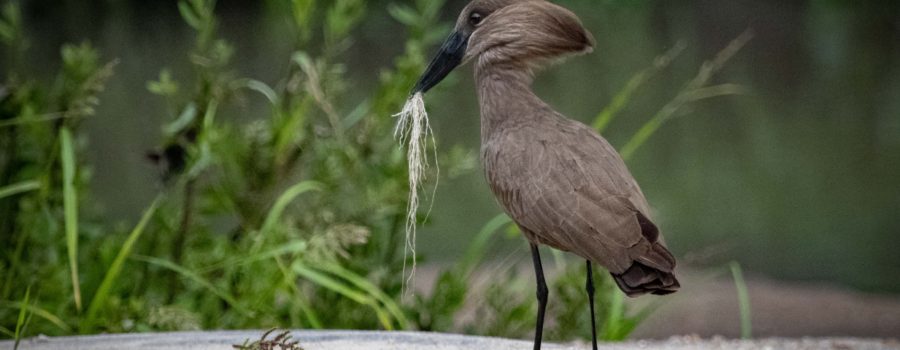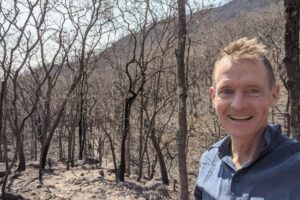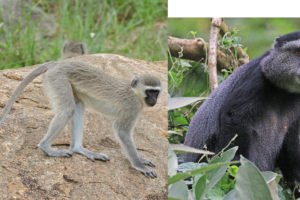Last week, on my final morning before departing Malawi, I set the alarm clock to awaken before dawn. My trip back to Washington DC, scheduled to last a painful 32 hours, was to begin at 7 a.m. with a pick up to the airport. In order to make sitting this duration tolerable, I wanted to finish a final run before heading out. Though it was painful getting up in the dark, I knew I would thank myself 1.5 days later when I arrived back in the USA.
I set off as dawn began, dodging potholes and pedestrians. My usual running route in Blantyre is a loop, all on city streets. The outbound begins flat and ends with a steep painful hill, while the return road undulates back to my home. On my return, the road parallels a small stream lined by large trees. Several small plant nurseries line this stream, coming up all the way to the running path. Early in the morning, it is a relatively quiet. This morning, on the return home, I heard the loud call of a bird. Though I remembered that I liked the bird who was making this sound, I couldn’t identify it. I stopped running, cut through a plant nursery’s seedlings, and headed towards the river. Coming down to the stream, I saw them. There they were, two hamerkops building a giant nest in the crook of a nearby tree.
The first time I saw a hamerkop I loved it. They look like small pterodactyls, but with feathers. Their plumage is boring brown and without markings, so ugly that they are beautiful. Previous to that morning, my last sighting was in February 2021, when visiting Majete National Park with my friend, Karen Smith. Karen is an avid photographer. Together we spied an adult bird gathering vegetation for its nest. Karen took dozens of pictures of our builder hamerkop, but we never sighted one of the fabled nests.
Like many other things in the Warm Heart of Africa, I knew I would miss these birds.
Hamerkops are medium-sized waterbirds. They are named for their head shape: “hamerkop” is “hammer head” in Afrikaans. The birds occupy their own genus, Scopus. Their closest living relatives are shoebills, which are even uglier and bigger than hamerkops. They fly well, but when I see one walking it always makes me smile. Each time a leg moves forward they move their head to that side. They walk like a wind-up metal bird toy from the 1950s.
Hamerkops live in Africa, Madagascar, and on small parts of the Arabian Peninsula. Their diet is fish and amphibians. The nests are a treat. Each is 5 feet (1.5 meters) in diameter and built in the fork of a tree. Pairs of birds construct 3-5 nests per year. Even if not breeding or occupying them, they still build the enormous nests. On the bottom is a flat platform of sticks. To this they add walls and a domed ceiling. Each nest contains approximately 8000 sticks held together with dried mud. Nests are so strong that adult humans can stand on them without damaging it.
Probably because of their unusual shape, nesting behavior, and call, hamerkops are featured in several legends in Africa. In Madagascar, some believe that anyone destroying a nest will develop leprosy. The Bushmen believe that robbing a nest results in the thief being struck by lightning. In Kenya, the legends are simpler. Hamerkops are linked to witchcraft and harming them will bring misfortune. Lucky birds! When your reputation is not good, it means you will not be hunted and are unlikely to ever be endangered.
As mentioned previously, the birds have their own genus, Scopus. Those of you who work in medical research realize this is a familiar word. Scopus is the abstract and citation database of a prominent medical publisher, Elsevier. I looked on the company’s website. It contains a (boring) blog but no hints as to why Elsevier chose the genus name of an oddly-shaped obsessive nest builder for their database. If anyone is out there who can answer this mystery, enlighten us, please.
And so it went. I stood for several minutes by the side of the stream, watching two hamerkops tending their gigantic nest. To my knowledge, no bird in the USA is as bizarre looking or behaving. Like many other things in the Warm Heart of Africa, I knew I would miss these birds. Turning, I headed home.






